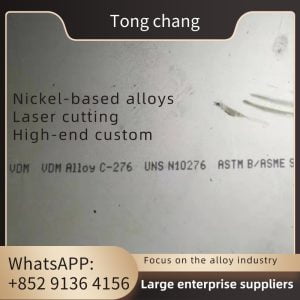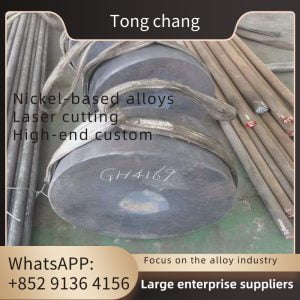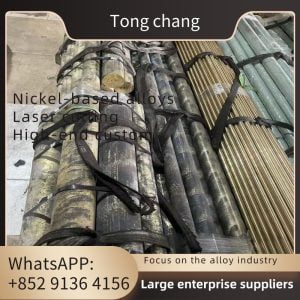| Product Name: | Carbon Steel Baffle Plate | Standard: | ASTM, ASME, DIN, EN |
|---|---|---|---|
| Material: | Stainless Steel, Carbon Steel, Alloy Steel, Nickel Alloy | Shape: | According To The Client’s Request |
| Size: | According To The Client’s Request | Main Process: | Drilling |
| Application: | Heat Exchanger, Boiler, Pressure Vessel, Steam Turbine, Large Central Air Conditioning And Other Industries. | ||
| High Light: | Customized Carbon Steel Baffle Plate, Carbon Steel Heat Exchanger Baffle Plate | ||
Carbon Steel Baffle Support Plate For Heat Exchanger
Baffle plates serve as obstructions within the heat exchanger, causing the fluid to change direction and creating turbulence. This turbulence enhances heat transfer efficiency by promoting better mixing and reducing the formation of stagnant zones. The design and positioning of baffles play a crucial role in optimizing the flow path and maximizing heat transfer. Drilling is indeed one of the primary machining processes used for baffle plates. The plates are typically thin and require holes to be drilled accurately to allow the passage of tubes and facilitate fluid flow. Stack drilling is commonly employed when multiple baffle plates are used for thicker or more complex baffle arrangements. The stack is clamped together, and the necessary holes are drilled simultaneously to ensure alignment and consistency among the plates.
Materials of Baffle Plate
| Type of materials | Technical requirements * according to |
| Duplex Stainless Steel | ASTM/ASME SA182 F44, F45, F51, F53, F55, F60, F61 |
| Stainless Steel | ASTM/ASME SA182 F304,304L,F316,316L, F310, F317L, F321, F347 |
| Carbon Steel | ASTM/ASME A105, A350 LF1, LF2, A266, A694, A765 Gr.2 |
| Alloy Steel | ASTM/ASME SA182 F1, F5, F9, F11, F12, F22, F51, A350-LF3 |
| Non Ferrous | |
| Titanium | ASTM/ASME SB381, Gr.1, Gr.2, Gr.5, Gr.7, Gr.12, Gr.16 |
| Copper Nickel | ASTM/ASME SB151, UNS 70600(Cu-Ni 90/10), 71500(Cu-Ni 70/30) |
| Brass, Al-brass | ASTM/ASME SB152 UNS C10100, C10200,C10300,C10800,C12200 |
| Nickel Alloys | ASTM/ASME SB169,SB171, SB564, UNS 2200, UNS 4400, UNS 8825 UNS 6600, UNS 6601, UNS 6625 |
| Alloy 20 | ASTM/ASME SB472 UNS 8020 |
| Hastelloy | ASTM/ASME SB564, UNS10276 ( C 276 ) |
| Claded materials | ASTM/ASME SB898, SB263, SB264 or closer explosion cladding, making materials of 2 in 1 or 3 in 1. |
| Titanium- Steel, Nickel-Steel,Titanium- Copper, Stainless Steel- Carbon Steel, Alloys- Steel etc. |
The role of a baffle plate in a heat exchanger can be summarized as follows:
1. Enhancing Heat Transfer: Baffle plates extend the flow channel length on the shell side of a heat exchanger, allowing for increased flow velocity between the tubes. This leads to greater turbulence and improved heat transfer efficiency. The turbulent flow helps in breaking the boundary layer near the tube surface, facilitating better heat exchange between the fluids.
2. Supporting Heat Exchange Tubes: In horizontal heat exchangers, baffles provide support for the heat exchange tubes. They help counteract the compressive stress experienced by the tubes, especially when they are long. By increasing the number of baffles and reducing the distance between them, within the allowable pressure drop limit, the baffle plates help maintain the mechanical integrity of the tubes and prevent excessive vibration induced by fluid flow.
3. Facilitating Tube Installation: Baffles also play a role in simplifying the installation process of heat exchange tubes. They provide structural stability and serve as guides for tube placement, ensuring proper alignment within the heat exchanger. This makes the assembly and maintenance of the heat exchanger more convenient and efficient.
What the effect of the baffle plate?
- Increase the flow velocity of the fluid in the shell side.
- Enhance turbulence intensity.
Improve heat transfer efficiency.
Support the heat exchange tube.
Application







